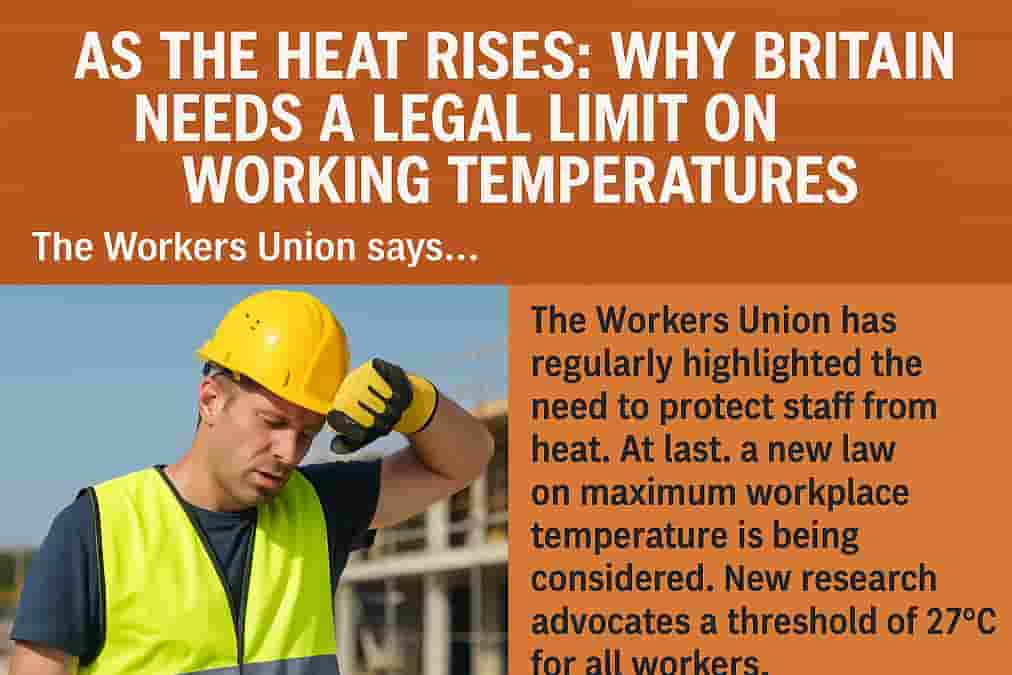The Workers Union has long been vocal about the urgent need to safeguard working people from the impacts of extreme heat. Now, as Britain records its warmest spring in history, there is fresh momentum behind the campaign for legal protections — and it appears that decision-makers are finally starting to listen as the heat rises.
New research released by the Autonomy Institute reveals a sobering reality: up to two-thirds of the UK workforce could be facing sweltering heatwaves exceeding 35°C by 2030 if no action is taken. The report underlines what The Workers Union has consistently argued — that extreme heat in the workplace is not just uncomfortable, but dangerous. In fact, an estimated six million workers, particularly those in construction, agriculture, logistics, food production, and frontline services, are already being routinely exposed to hazardous levels of heat without any enforceable legal limits.
UK workers are the backbone of the country — and they deserve better
For too long, the conversation around working in heat has been overlooked, despite repeated warnings. We have raised this issue across many of our previous articles, making the case for strong, enforceable workplace protections against heat. Now, as global temperatures rise and climate unpredictability becomes the new norm, the time has come to make real legislative changes.
The Autonomy Institute’s report calls for the government to introduce a legal maximum indoor working temperature of 27°C. It also recommends a legal right to stop work during periods of excessive heat and mandatory provisions for shade, hydration, and rest breaks.
In 2025, it is unacceptable that millions of workers still operate in conditions that would be considered intolerable in other developed nations. The lack of formal guidance or legislation leaves far too many vulnerable workers sweltering in heatwaves and succumbing to heat exhaustion, heatstroke, and even long-term health issues.
What does the law currently say?
At present, there is no maximum working temperature defined by law. According to the Health and Safety Executive (HSE), every workplace is different, making a one-size-fits-all rule difficult to impose. In some industries, such as bakeries or foundries, high temperatures are generated by the nature of the work rather than seasonal weather. For this reason, the HSE only offers general guidance, stating that employers must “keep the temperature at a comfortable level” and ensure “clean and fresh air” is provided.
However, critics argue that this vague wording fails to reflect the changing climate or protect workers in outdoor and unregulated environments. Without clear legal thresholds, enforcement becomes inconsistent, and workers are left relying on the discretion of employers, many of whom are under pressure to meet deadlines or avoid delays.





